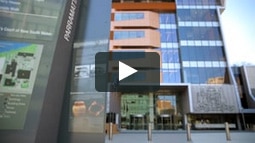Digital Driver’s Licences to be Implemented This Year
More and more, smartphones have become an integral part our lives. No longer are they just a way to stay in touch with friends and family, smartphones now allow us to do just about anything from banking and retail shopping to paying bills and navigating our way around the world. Moving away from plastic-coated to digital driver’s licences seems a natural extension of this.
Keeping with its election promise, Finance Minister Dominic Perrottet says the NSW government will “keep pace with the changes in the private sector” by rolling out digital licences this year.
The cost of licensing
Australian authorities currently issue over 120 different types of licences, from gambling and fishing permits to driver’s licences. Every year the NSW government issues about “23 million licences each year with nearly 770 different types of licence and identification cards available across the state” (Source: Sydney Morning Herald). According to the National Roads and Motorists’ Association, issuing close to 3 million plastic cards costs “…tens of millions of dollars in printing.
This is not to say that the new system is without significant costs. A State Government spokesperson, speaking to the Sydney Morning Herald, announced the initial phase of the move to digital licensing will “…cost around $23 million in capital expenditure and approximately $5 million in operational expenditure.”
The benefits of digital drivers licences
The idea of digital licences presents a very convenient and attractive identification option for many people. Consider that most smartphones already contain a wealth of personal information, it only makes sense to have access to licence information in a digital format as well. Additionally, the amount of information that can be stored in a digital format far exceeds that of a printed version. For example, the new digital driver’s licences would contain info like:
- Blood type
- Allergies
- Medical conditions
- Contact persons
This is an important consideration when it comes to emergencies and individuals being unable to communicate due to injuries:
Beyond that, digital licences can be immediately updated, from noting an individual is 21 years old to tracking traffic violations and restrictions as they accrue. Many believe digital versions are more secure than existing licences, especially if biometric security components are incorporated, according to CNET. However, having access to all that information raises big concerns about what authorities might also have access to when checking a digital licence.
Privacy concerns and digital drivers licence
With any new technology comes concerns about privacy and security. The NRMA surmises that in most traffic stops, the officer would take the digital device back to his or her police vehicle to conduct a check. If this requires unlocking the phone, it could lead to officers accessing information far beyond that stored in conjunction with the licence.
In the US, digital licencing underwent a test run in 2015. As pointed out by Mashable, even though the US Supreme Court requires police to obtain a warrant to search a smartphone, using a smartphone as an identity tool might well open up a slew of opportunities for officials to gain access to all sorts of information that would not be available through printed cards. One solution noted by CNET would be a feature that blocks personal messages from appearing on the phone’s screen when the licence app is open.
Technological glitches
Everyone experiences technology glitches. Some are legitimately due to poor programming or faulty hardware, but one of the most common to occur in smartphones is completely due to operator error, specifically lack of power. Luckily, it appears that government officials are taking a practical approach to this issue, making the ability to access information and verify that a driver holds a valid license. The NRMA confirms that there will be no additional fines to drivers whose phones are out of juice when an official requests to see their ID.
Implementing digital driver’s licences
Two US states, Iowa and Delaware, have implemented initial program studies, and several other states have similar plans in the works. In August 2015, according to Mashable, Iowa began live testing of its Mobile Driver License (mDL) with about 100 Iowa Department of Transportation employees. The digital licence looks similar to a picture of a plastic printed licence, including a photo, expiration date, address and other information.
Noting that the state was not yet ready to switch over to all digital licences, Paul Trombino, director of the Iowa Department of Transportation, stated his belief that the program is “…an important first step in creating a one person, one identity, one credential opportunity for our customers.”
Australian authorities plan to begin the transition to digital licenses with:
- Fishing permits
- Responsible service of alcohol (RSA) permits
- Responsible conduct of gambling (RCG) licences







